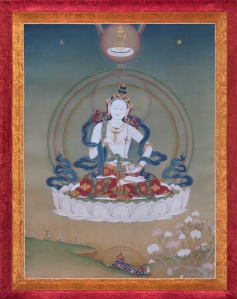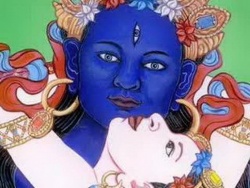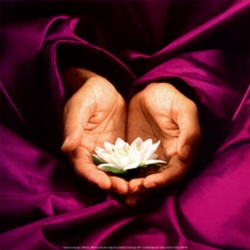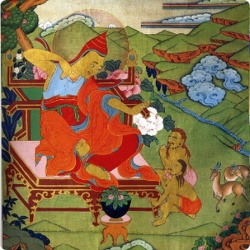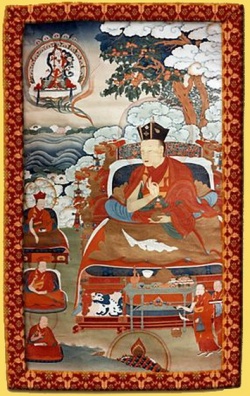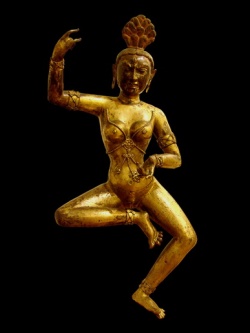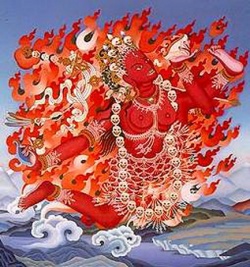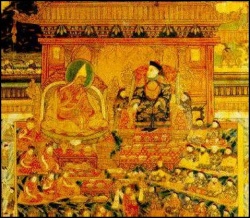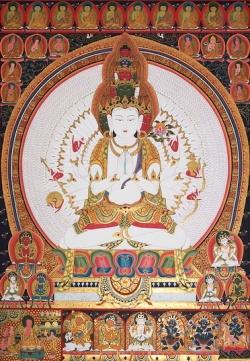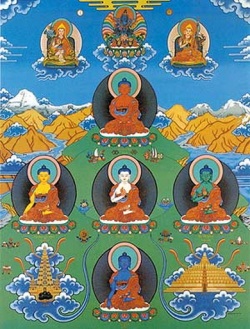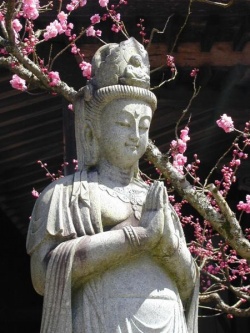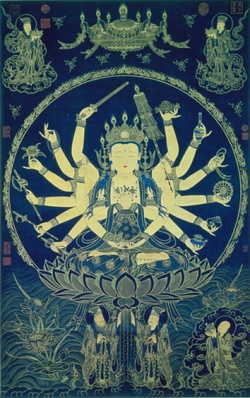How's Buddhism spreading in Africa?
Author: Rev. ILukpitiye Pannasekara Nayaka Thero
Buddhism came to other countries few years ago by different Buddhist teachers from different countries. They have established it properly and continue up to now.
But, very recently it came to Africa not more than 100 years history of Buddhism. It is very new, but, many countries like as Tanzania, Botswana, Kenya, Uganda, Malawi and South Africa have many Buddhist temples, organizations, centers and academic studies. Therefore after looking way back we can have some happy progress in future.
Among those countries Tanzania, Botswana, Kenya, Uganda and Malawi have one Buddhist temple in each country.
But, South Africa is having more Buddhist centers, temples and organizations which teach different kinds of Buddhist practices.
Especially University of South Africa (UNISA) (www.unisa.ac.za) is having some Buddhist studies up to Doctorate Degree studies under the religious studies. And also at University of Botswana (www.ub.bw) teach distance and internal Buddhist studies. Therefore it is better to open our Buddhist view about Buddhism in Africa.
Tanzania:
According to the clear details which have been found, the first Sri Lankan Buddhist group came to Tanzania in 1920. They established a Buddhist centre and registered it there. That time about 400-450 Sri Lankan Buddhist people were working there and now this is taken as the oldest Buddhist temple in Africa.
They decided to work together as a "Sinhalese Buddhist Association" and then they bought a piece of land from the Tanzanian government and brought a seedling of Bodhi tree from Anuradhapura - Sri Lanka by Mr. Gunapala and planted it in 1920.lt has grown up now covering about lA acres.
The Buddhist Association hall was built in 1927, but now it is being used as a house for a nursery school. There was no Buddhist monk in Tanzania until early 1960. In the past Buddhist association was called the "Sinhalese Buddhist Association", but since it did not include the Thai, Burmese, Chinese, Africans and other Buddhists, they have changed the name to "Buddhist Association "so that all Buddhists and others could come and worship there.
The pagoda and Buddha mandir (shrine room) was built in 1956. It is open for every body all the time.
There was no any resident monk in Tanzania until 1983. The first resident monk, who came to Tanzania, was late Ven. Puhulwelle Vipassi thero.
Second one was Ven. Witharandeniye kassapa. Third one was Ven. Pidiwille Piyatissa thero. And afterwards, different monks came from time to time.
Ven. Badigama chandaloka, Ven. Devalegama Dhammasena, Ven Kanumuldeniye Dhammasoka, Ven. Thailand Channawanno, Ven. Kahadawa Amarabuddhi, Ven. Ratwita wimalajothi, ven kahalle chandrajothi, ven wilachchiye wijithananda, and ven Madagampola Pannaseeha were residence there and they went back to Sri Lanka and other different countries.
Ven ILukpitiye Pannasekara - the chief monk for the African continent is the twelfth resident monk to Tanzania. He went to Tanzania in 1998 till now he is still doing his services to many African countries and all over the world (www.pannasekara.com).
And he has numerous responsibilities to do, like he has to travel to other neighboring countries like Kenya, Malawi, Botswana, Zambia, South Africa, Rwanda, Zanzibar, Swaziland, Lesotho, Egypt, Libya and etc. to perform various religious ceremonies, because there are no resident Buddhist monks up to now in these countries. Tanzania Buddhist center is used as the Buddhist center for the whole of African continent. After this center there are some other Buddhist centers built in some countries as follows:
South Africa
First Buddhist center to South Africa is the Buddhist retreat center in South Africa near Durban. It was created by Dr Luis Van Loon few years ago and officially opened for the public 07th may 1980 and developed as a tranquil place to practice and study philosophy, theology, meditation, and Buddhist arts; the Retreat Center encourages practice of certain moral codes during retreats. This center has been arranging many Buddhist retreats from beginning up to now. After that many other Buddhist centers has been started in many other places as follows with different traditions of Buddhism.
African Buddhist Seminary - Bronkhorstspriut
Benoni Cultural Centre
Bloemfontein Meditation Centre
Buddhist Circle - Norwood Gauteng
Buddhist Retreat Centre - Website: www.brcixopo.co.za
Buddhist Theravada Centre - Cape town Buddhist Theravadan Group - Cape town Cape Town Cultural Centre Cape Town Samye Dzong
Diamond Way Buddhist Centre - Western Cape - www.diamondway-capetown.co.za Durban Mahasiddha Kadampa Buddhist Centre - Website: www.meditateindurban.org
Durban Meditation Centre
Durban Zen Group
Emoyeni Retreat Centre - Website: www.emoyeni-retreat.com
FWBO Johannesburg 'Shantikula - Website: www.fwbojhb.co.za Goenka Vipassana - Eastern Cape Good Heart Dharma Group - Durban
Grahamstown Zen Group
Hout Bay Theravada Buddhist Centre Website: www.theravada.org.za Johannesburg (FWBO) - Website: www.fwbo.org/contacts/Johannesburg Zen Group Johannesburg Zen Group
Kagyu Buddhist Centre - Western Cape. Website: www.kagyu.org.za Kagyu Samye Dzong - Capetown
Kagyu Samye Dzong - Capetown Website: www.samyeling.org/ Kagyu Samye Dzong - Johannesburg
Kagyu Samye Dzong - Johannesburg Website: www.samyeling.org/
Kagyu Samye Dzong - Port Elizabeth Website: www.samyeling.org/
Lam Rim centre - Johannesburg. Website: www.lamrim.co.za
Mahasiddha Kadampa Buddhist Centre Website: www.meditateindurban.org
Myanmar Buddhist Association of South Africa
Nan Hua Temple (I.B.A.S.A.) Website: www.nanhua.co.za
Newcastle Meditation Centre
Nichiren Daishonin's Buddhism -South Africa Website: www.sgi-sa.org.za Poplar Grove Zen Centre
ROKPA South Africa Website: www.rokpa.org
Rondebosch Dharma Centre Website: http://home.worldonline.co.za/~dharmken/
Sat Chit Anand - Plettenberg Bay Website: www.satchitanand.co.za
The Dharma Centre - Robertson. Website: http://home.worldonline.co.za/~dharmken/
The Lam Rim Buddhist Centre of South Africa Website: www.geocities.com/lamrimsa, The SGI-SA Cultural Centre Website: www.sgi-sa.org.za/
The Tibet Society of South Africa
The Wisdom Centre - Cape town Website: http://www.wisdomcentre.org
Tushita Buddhist Centre -Western Cape. Website: www.meditateincapetown.org
Vajrapani Buddhist Centre - Johannesburg Website: http://www.meditation.org.za
Vajrapani Buddhist Centre - Blairgowrie Gauteng
Vipassana Association of South Africa - Website: http://www.pataka.dhamma.org
Botswana
Botswana is situated in Central Africa, around 1970 some of the Sri Lankans started going to Botswana.
The community gradually increased and started to work together for religious, cultural and national affairs. At the same time they started to arrange some group meditation classes and most of the time, Late Mr. Godwin Samararatne was coming from Sri Lanka to help them to expand their meditation skills.
Then Mr. Uttum Corea and Mrs. Dinky Corea decided to establish a Buddhist center at their private land in Gaborone North.
This family came from Sri Lanka to Gaborone in Botswana in 1974; Mr Uttum Corea was working as an accountant. They registered the 'Botswana Buddhist Association' as a society in 1990. The land was cleared as community effort with the willing help of members of the Buddhist Association from a number of different nationalities. The first inaugural meeting of the Buddhist Association was held on 30th November 1990.
In 1991, Mrs. Dinky Corea obtained a Bodhi seedling from the Historical Sri Maha Bodhi tree in Anuradhapura, Sri Lanka and it was subsequently planted in the temple ground on the 06th December 1992. Now it is about 17 feet in height.
After that they started building a Pagoda on 16th February 1993. The ceremony was officiated by Rev Kahandawa Amarabuddhi who came from the Buddhist Temple in Tanzania for the occasion. The pagoda was completed in 1994 mainly through the effort of Mr. Uttum Corea and the crystals for that were donated by Mr. and Mrs. Thutta from Myanmar.
The inauguration was performed with all the traditional customs. For the first time in Buddhist history in Africa tamed African elephants were used to carry the pinnacle around the pagoda. These elephant training project had been started by Mr. Uttum Corea to promote the preservation of elephants. The elephants had been saved from culling operations by Mrs. Dinky Corea's family and tamed and trained by mahouts from Dalada Maligawa in Kandy, Sri Lanka.
At the temple premises they have kept two big Buddha's statues. First one was kept 29th June 1992 by Mr. Uttum Corea and it was made by the Ven. Vipulasara of Ratmalana temple in Sri Lanka and the second statue of the Buddha was brought from Thailand to the temple in Botswana on 29th June 1996. Ten Thai monks and other Thai devotees arrived from Thailand to Botswana carrying the statue. It was placed inside the temple after a blessing ceremony. This function was coordinated by Mrs. Marget Loo on behalf of the Buddhist community in Botswana.
The Burmese Buddhist community in Botswana decided to prepare a sacred bronze bell for this temple. They offered this bell to the temple on 29th June 1996. It is 125 kg in weight and cost Kyat (Myanmar) 92280. Casting commenced on 27.01.1995 and it was completed on 14.02.1995 by Saw min yin and Tampawaddy Qr in Mandalay, Myanmar.
The monk's resident temple is not a very big one. It has two small rooms, a kitchen, bath room, toilet and sitting room. Two monks can easily be accommodated.
Three resident monks have graced the Gaborone Temple, but only from 28th June 1996 till 3rd March 1998. They were Ven. Kekunawela Yasassi, Ven Diyapattugama Ratanawansa and Ven Phra Maha Rungvirojana. The first two of these venerable were from Sri n Lanka and the third one was from Thailand. Since then, the other following monks and nuns visited the Temple from time to time and these monks and nuns were Ven. Devalegama Dhammasena, Ven. Kahanda Amarabuddhi, Ven. Kanumuldeniye Dhammasoka, Ven. Ratvita Wimalajothi, Ven. Dhammarakkhita, Ven. Manya, and Ven Ilukpitiye Pannasekara. But, Ven. Pannasekara -The chief monk for the African Continent has being visiting this temple for several times. His first visit was on 10th September 1999 and he stayed there for ten days and he performed many religious services and lectures at the University of Botswana and left for Tanzania on 29th Sep 1999. He came again for Vesak celebrations and other religious services in 2001, 2002, 2003 and 2006.
Kenya
Kenya is also one of the countries which is having a Buddhist centre, and this centre was built in 1999 by George Phylnormel Foundation in memory of Mr. George Phylnormel and Mrs. Norma Perera. it is the only Theravadin Buddhist Centre in Kenya. It is located in the suburb of Loresho in Nairobi.
The Centre is built on a half-acre plot and includes a house for resident monks, a shrine room, Meditation hall, a pagoda, two small Bodhi trees and a servant's quarters. The residence is a two storey building fully equipped to meet all of their living needs.
The shrine room/meditation room contains a Buddha statue brought from Sri Lanka.
A pagoda has been constructed in the southernmost corner of the property. Near the pagoda two Bodhi trees have been planted, one of which was brought from India by an Indian monk and planted in 2000. The second tree was planted on February 4, 2000 by the chief monk for the African continent, Rev. I Pannasekara, along with the Sri Lankan High Commissioner, a father of a Catholic Church and other devotees as a commemorative peace tree.
Until 2001 there were no resident monks at the Centre. Rev. ILukpitiye Pannasekara and Bhante Wimala would travel to Nairobi from other African countries to conduct religious services. Bhante Wimala used to travel to Nairobi several times to conduct classes and give Dhamma talks and used the centre as his base whilst conducting humanitarian projects in Africa.
In 2001, Bhante T. Ariyavansa became resident monk assigned to the Temple. Originally from Toronto, he previously practiced Buddhism in Sri Lanka, he looked after the day-to-day activities and programmes of the centre till 2006. After that there were no any resident monks but they were only some visiting monks who until now visits the temple.
Malawi
In this country there is a Taiwanese Buddhist centre, which is working with street children and it has got also the shrine hall and other things. This centre was founded in 2001 in Blantyre and they named it Amitofo Care Centre (ACC) and it is a Non Government Organization (NGO) which is also non profitable organization. It was founded by Master Hui Lee and upon he visited Malawi in 2000, he was inspired to establish a Buddhist centre.
Master Shih Benkong began to assist Master Hui Lee in maintaining the activities and properties of the Centre. Currently some trained student from the African Buddhist seminary and some devotees conducts the religious and social services of the centre and are responsible for the upkeep of the Center's Buddhist shrine, Bodhi tree, and meditation hall.
The Centre is visited by approximately 100 Sri Lankan Buddhists who goes and attend the center's religious services and meditation classes with the community gatherings.
As a non-profit Organization, there are supplemental activities to the religious service and their mission is to "care for street children and improve the quality of life of the people infected and affected by HIV/AIDS in the country", and has four additional components:
1. To provide a children's home for orphans
2. To function as an educational centre
3. To offer guidance
4. To construct a health centre at the former Men's Young Pioneers base in Mapanga.
Uganda
The Uganda Buddhist Centre was founded by Venerable Buddharakkhita who is a Ugandan by nationality and he was the first Buddhist monk in Uganda to introduced Buddhism in the country on April 10, 2005. It was created to introduce and preserve the Buddha's teachings within the context of African culture.
The Uganda Buddhist Centre is the first Buddhist Centre in Uganda. It is located on two acres of land at Bulega, Garuga, Entebbe (about 5 km off Kampala-Enteebe main road). The centre is open to all people who wish to cultivate peace, harmony and happiness.
Currently, there are eleven Ugandans who have already converted to Buddhism and taken the 5 precepts. Besides, there are traditional Buddhists: seven Thais, one Burmese and forty-five Sri Lankans who live in Uganda. We are still establishing the first Buddhist Temple in Uganda. We hope that the Temple will serve the spiritual needs of the Buddhist communities in Uganda and other African countries. It's vision is as follows:
To propagate the teachings of the Buddhism in Uganda and other African countries.
To establish Buddhist Temple where monks, nuns and other people can live and practice the Dhamma in Uganda.
To offer organized insight meditation retreats and Buddhist study programs to the general public.
To provide a space for a limited number of lay people, who will assist in running of the centre.
To organize social, and cultural activities.
Zambia
Also this country is having some Buddhist people and the majority of them are from Sri Lankan. They have got a Buddhist association which helps them in there dairy Buddhist practices all together. Sometimes they invite a monk and perform religious services especially during the day of Vesak, but from 1999 till now no any visiting monks visit them there. But, still they do have their individual practices.
Swaziland
This country is situated inside South Africa and there are about 50-60 Sri Lankan Buddhists. For the first time in the history they invited me there and performed some religious services last February 2008. it was a very historical event.
Egypt
This country is also having some Buddhists and the Majority of them are from Sri Lanka. Therefore they come to the Sri Lankan embassy and perform different kind of religious and cultural activities.
Generally in many African countries we can find some Buddhist groups and Some countries have Buddhist centers. Many local people now are having interest to learn and practice these Buddhist teachings. Therefore we have to discuss about how world Buddhist organizations and world Buddhist communities can work together to help these African community.
It needs many Buddhist teachers and support.
But, I have tried to get in contact with many organizations in the world, but they haven't yet make any proper connections. Therefore I am still waiting for good support and good people to come and help me to establish Buddhism on Africa.
